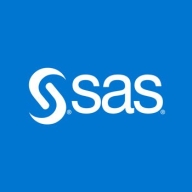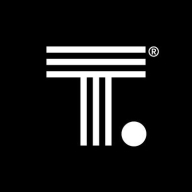


Find out what your peers are saying about Salesforce, Apache, Splunk and others in Data Visualization.
The enterprise subscription offers more benefits, ensuring valuable outcomes.
This saves a significant amount of time, particularly for reports that would have needed around fifty people.
The ROI of using Tableau extends to its seamless integration across various platforms, as it's from Salesforce and thus not limited to any specific cloud provider.
Tableau is saving me time, money, and resources, which I would rate as ten.
Using ThoughtSpot has resulted in significant time savings and improved business sales by allowing us to identify sellers and buyers across regions, facilitating targeted marketing.
Based on our implementation in one project, we are trying to raise more funding to expand its use.
ThoughtSpot saves a significant amount of time compared to other tools and is very user-friendly.
They provide callbacks to ensure clarity and resolution of any queries.
They provide quick email and phone responses and have Thai-speaking personnel.
There should be consistent standards for all users.
The technical support for Tableau is quite good.
I stopped opening tickets due to insufficient and untimely responses.
ThoughtSpot provides a dedicated customer success person and the ability to submit tickets online, with a response time of no more than a day.
The knowledge base for ThoughtSpot is less robust compared to others.
Tableau is easy to use across various dimensions, whether on-premises or on the cloud.
The solution is fully scalable and performs well even with large datasets, provided there is proper supporting hardware.
Tableau is easy to scale.
Tableau, Power BI, or Looker have separate tools for preparation, customization, and storytelling.
The platform does not have technical problems with scaling data or connections.
As our data has grown, I have validated huge datasets and complex models without significant issues.
SAS Visual Analytics is stable and manages data effectively without crashing.
The application hangs after continuous use due to the buildup of cache.
I rate the stability a five or six because Tableau updates very often with new versions or patches.
I use it primarily for large datasets, and it performs faster than regular data visualization tools such as Power BI, which has limits on dataset size.
The upgrades are smooth with no downtime, which is super important.
The responsiveness of accessing live data is exceptional and faster than most other BI tools.
In terms of configuration, I would like to see AI capabilities since many applications are now integrating AI.
We cannot send the entire Excel file reports via email within Tableau.
The product owner should enhance its benefits or clarify its role.
It sometimes requires extensive investigation to determine why the data does not appear correctly.
Currently, it is not as customizable as the options available on Power BI or Tableau.
Handling governance when there are many models and dashboards is complex.
Enhancing integration capabilities with other tools like DBT would also be beneficial as it would make our lives easier.
Power BI as a much cheaper alternative.
A license for 150 users costs around $17,000 USD per year.
Looker is known to be quite expensive.
HubSpot is expensive.
ThoughtSpot's pricing is reasonable and in line with other BI tools.
The ability to query information from our Excel data into SAS to view specific data is invaluable.
A significant feature for me is the real-time connection to data sources because it effectively manages large data sets.
Tableau serves as a stable dashboarding tool for higher management, aiding in quick decision-making.
Building hyper extracts and visualization capabilities make Tableau a robust tool for data analysis.
Its compatibility with most databases, including the latest from FlexMovely and Redshift, allows users to create joins and worksheets easily.
This alerting feature is very beneficial for our company at the moment, and we use it extensively.
When I upload a data dump, AI analytics suggest possible data visualizations and insights, which I can pin to dashboards or live boards for modification.



SAS Visual Analytics is a data visualization tool that is used for reporting, data exploration, and analytics. The solution enables users - even those without advanced analytical skills - to understand and examine patterns, trends, and relationships in data. SAS Visual Analytics makes it easy to create and share reports and dashboards that monitor business performance. By using the solution, users can handle, understand, and analyze their data in both past and present fields, as well as influence vital factors for future changes. SAS Visual Analytics is most suitable for larger companies with complex needs.
SAS Visual Analytics Features
SAS Visual Analytics has many valuable key features. Some of the most useful ones include:
SAS Visual Analytics Benefits
There are many benefits to implementing SAS Visual Analytics. Some of the biggest advantages the solution offers include:
Reviews from Real Users
Below are some reviews and helpful feedback written by PeerSpot users currently using the SAS Visual Analytics solution.
A Senior Manager at a consultancy says, “The solution is very stable. The scalability is good. The usability is quite good. It's quite easy to learn and to progress with SAS from an end-user perspective.
PeerSpot user Robert H., Co-owner at Hecht und Heck GmbH, comments, “What I really love about the software is that I have never struggled in implementing it for complex business requirements. It is good for highly sophisticated and specialized statistics in the areas that some people tend to call artificial intelligence. It is used for everything that involves visual presentation and analysis of highly sophisticated statistics for forecasting and other purposes.
Andrea D., Chief Technical Officer at Value Partners, explains, “The best feature is that SAS is not a single BI tool. Rather, it is part of an ecosystem of tools, such as tools that help a user to develop artificial intelligence, algorithms, and so on. SAS is an ecosystem. It's an ecosystem of products. We've found the product to be stable and reliable. The scalability is good.”
Tableau Enterprise offers powerful features for creating interactive visualizations, dashboards, and maps, including drag-and-drop functionality and easy integration with multiple data sources, promoting real-time collaboration and self-service analysis.
Tableau Enterprise stands out with its ability to create user-friendly, interactive visualizations, making it pivotal for business intelligence applications. Users benefit from its seamless connectivity and advanced analytical functions, facilitating data blending and storytelling. Despite a complex learning curve and high licensing costs, its features like geospatial analysis and efficient content distribution drive its indispensable value for data-driven insights. Enhancements in predictive analytics and support integration with machine learning tools further its capabilities across industries.
What are the most valuable features?Tableau Enterprise is widely used for business intelligence, supporting industries like healthcare, telecommunications, and finance. Organizations utilize it to analyze performance indicators, operational insights, and financial analytics, enhancing decision-making through interactive reports and real-time data integration.
ThoughtSpot is a powerful business intelligence tool that allows easy searching and drilling into data. Its ad hoc exploration and query-based search features are highly valued, and it is easy to set up, stable, and scalable.
The solution is used for reporting purposes, self-service BI, and embedding into other applications for customers to do self-service analytics. It helps businesses with metrics, KPIs, and important insights by sourcing data from various sources into one golden source and visualizing it in an easy way for the business to consume. The pricing model is ideal, charging for data rather than the number of users.